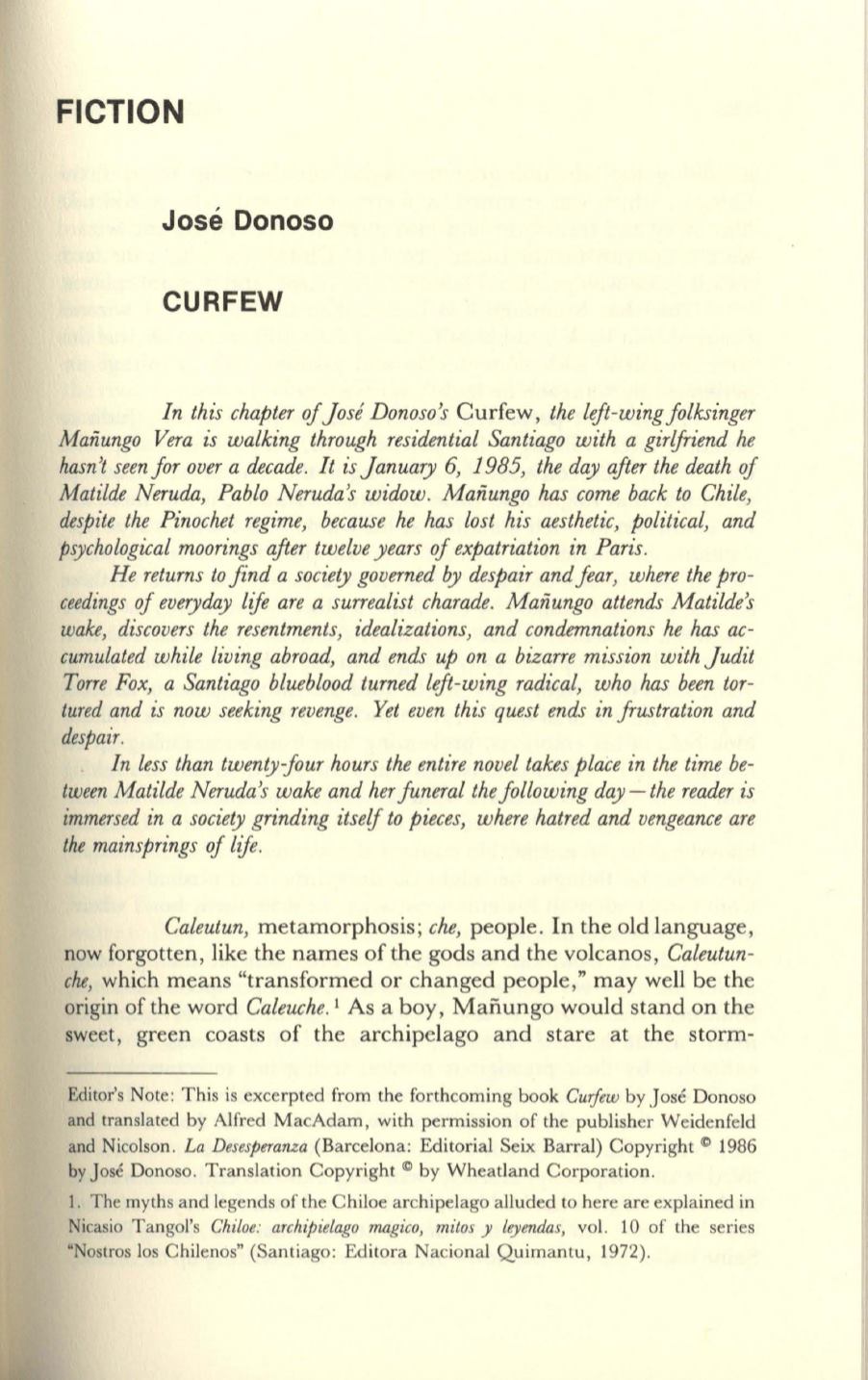
FICTION
Jose Oonoso
CURFEW
In this chapter
oj
Jose Donoso's
Curfew,
the left-wing folksinger
Manungo Vera is walking through residential Santiago with a girlfriend he
hasn't seen for over a decade. It is January
6, 1985,
the day after the death
oj
Matilde Neruda, Pablo Neruda's widow. Manungo has come back to Chile,
despite the Pinochet regime, because he has lost his aesthetic, political, and
psychological moorings after twelve years of expatriation in Paris.
He returns to find a society governed by despair and fear, where the pro–
ceedings of everyday life are a surrealist charade. Manungo attends Matilde's
wake, discovers the resentments, idealizations, and condemnations he has ac–
cumulated while living abroad, and ends up on a bizarre mission with Judit
Torre Fox, a Santiago blueblood turned left-wing radical, who has been tor–
tured and is now seeking revenge. Yet even this quest ends in frustration and
despair.
In less than twenty jour hours the entire novel takes place in the time be–
tween Matilde Neruda's wake and her funeral the following day
-
the reader is
immersed in a society grinding itself to pieces, where hatred and vengeance are
the mainsprings of life.
Caleutun,
metamorphosis;
che,
people.
In
the old language,
now forgotten, like the names of the gods and the volcanos,
Caleutun–
che,
which means "transformed or changed people," may well be the
origin of the word
Caleuche.
1
As a boy, Maiiungo would stand on the
sweet, green coasts of the archipelago and stare at the storm-
Editor's Note: This is excerpted from the forthcoming book
Curfew
by Jose Donoso
and translated by Alfred MacAdam, with permission of the publisher Weidenfeld
and Nicolson.
La Desesperanza
(Barcelona: Editorial Seix Barral) Copyright
<C>
1986
by Jose Donoso. Translation Copyright
<C>
by Wheatland Corporation.
I. The myths and legends of the Chiloe archipelago alluded to here are explained in
Nicasio Tangol's
Chiloe: archipielago magico, mitos
y
leyendas,
vol. 10 of the series
"Noslros los Chilenos" (Santiago: Editora Nacional Quimantu, 1972).


